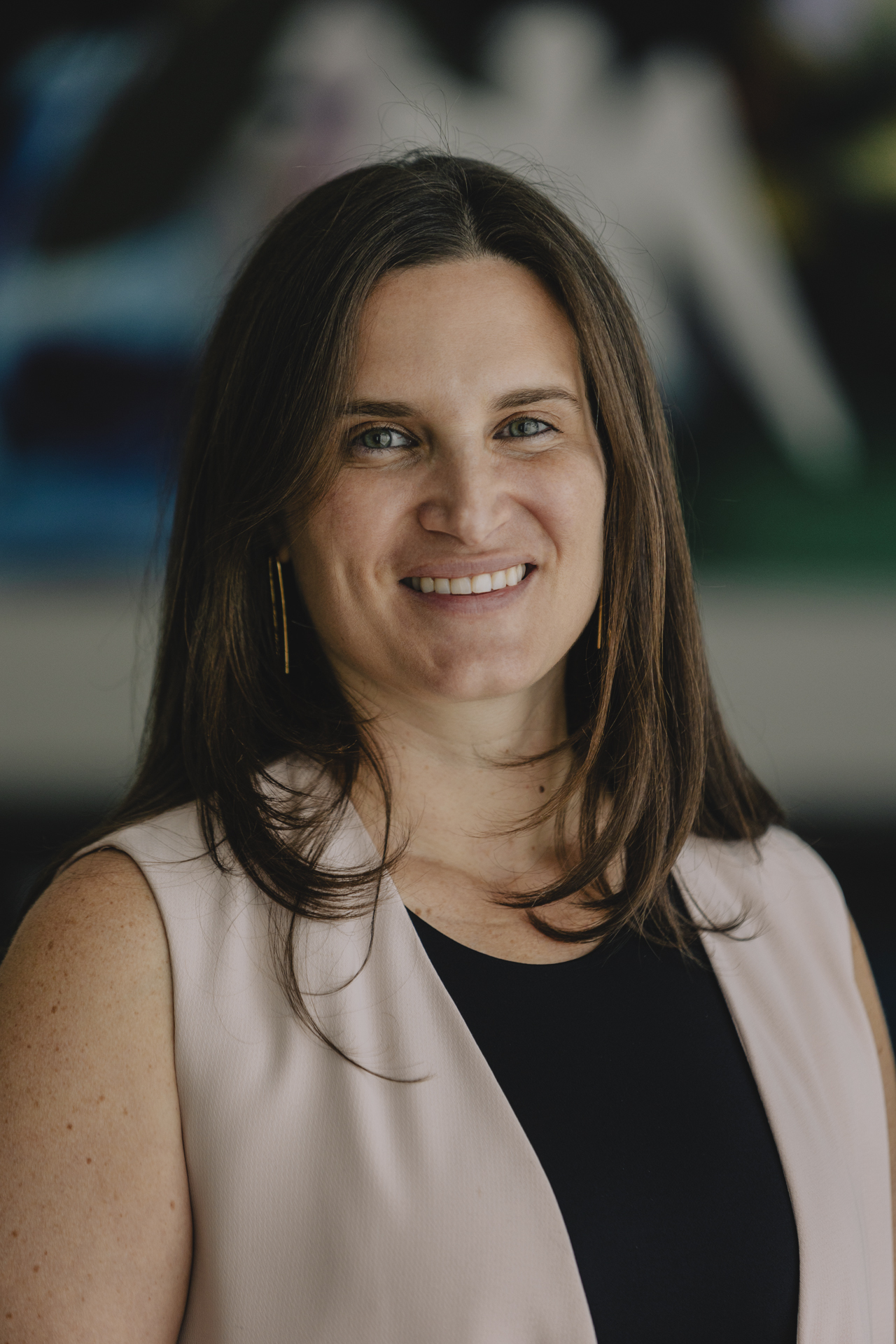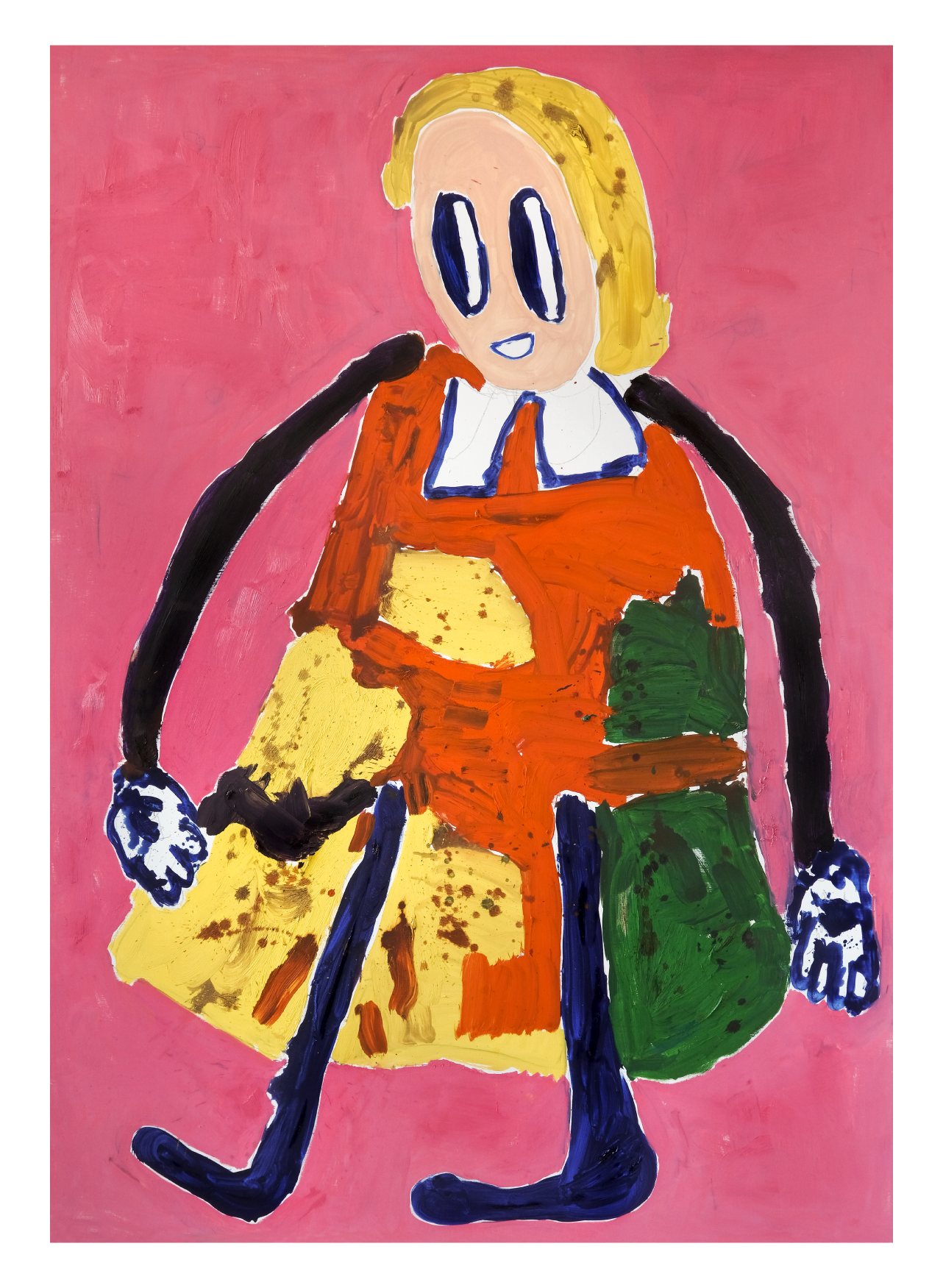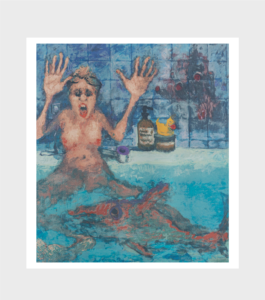Interview with Carolina Hausmann– director of Casa Santa Ana
by Paula V. Kupfer
Carolina, what is Casa Santa Ana? Can you tell me about the history of the organization, its mission, and how it has changed over time, especially given the many interruptions of the Covid-19 pandemic?
Casa Santa Ana is a non-profit organization that connects people through contemporary art. We want to show everyone that art can be relevant to their lives, especially communities with historically limited access to it. We’ve been working nomadically since 2015, and our work is mainly centered around Santa Ana, an underserved neighborhood in Panama City, Panama.
Casa Santa Ana was founded in 2015 by Johnny Roux, a passionate art collector who wanted to find a way to “give back” to Panama and decided to do it through his passion, contemporary art. Johnny wanted to open up greater and free access to excellent international contemporary art in Panama, offer local artists more tools, and bridge local and global art scenes.
Over the years, we have evolved and become a five-legged beast: we organize exhibitions, publications, residencies, community programming, and workshops or presentations. We have two main audiences: artists and our neighbors in Santa Ana.
We strive for and pride ourselves in listening to our community’s needs. Santa Ana is a neighborhood where most people live day to day, so when the pandemic started, we knew there would be a lot of need. During the time that Panama had the most restrictive quarantine in the region, or maybe worldwide, we were able to help 1,500 families with food bags during the first two months in the pandemic. That’s what was needed and we were grateful that we were able to help.
One of the silver linings of the pandemic has been the opportunity to reconsider our priorities. Before, we were spending a lot of time, energy, and resources preparing to inaugurate an ambitious art space, and we let go of this idea. The heart of that space was going to be a children’s library, which would provide literacy support for kids and their families starting from age zero. During the pandemic, as I struggled with my six-year-old son who was learning to read and write, it became obvious that if we could focus on only one thing from the original idea of the art space, it should be the library. So that’s what we are doing. Especially considering that while everything else is “back to normal,” public schools are still closed in Panama.
We all have stories to tell and our stories are equally important and deserve to be heard. We will be providing a safe space for children to learn and discover who they are—and who they can become—through their engagement with books. Books are mirrors that allow us to see ourselves, windows to look out from and sliding doors to encourage us to get out of our comfort zone, knowing we have a safe space to return. Our library will provide a safe space for learning that our community needs.

Carolina Hausmann
Director, Casa Santa Ana
The space will also include a multipurpose area that we can use for small exhibitions, for our residency program, and for Voces en Accion (Voices in Action). The latter is an experimental art conceptualization and production workshop led on an annual basis, since 2017, by artists Donna Conlon and Jonathan Harker. In this workshop we emphasize constructive criticism, experimentation, mutual support, collaboration, and especially the importance of using one’s authentic voice to address urgent social and political issues. It has forged a greater sense of community among local artists.
As for larger exhibitions, which have always been part of our plan, we will continue to organize them in collaboration with other spaces in the city, as we did in 2016 with Larry Fink: An American Life, at the Museum of Contemporary Art.
"We are always looking for creative, collaborative ways of funding our projects in a sustainable manner."
UNTITLED
Silkscreen print, 38.5x 27.5 In (98 x70 cm)
Produced on 320 g 100% cotton Somerset satin natural white paper
As the director, what is your role in the organization? How has it both built on your previous professional experiences and aligns with your own passions and commitments?
Since we are a small organization, as director of Casa Santa Ana I wear many hats. I’m originally from Caracas, studied art history and psychology at NYU, worked in museums in Mexico, and have been calling Panama home for the last eleven years.
I am the granddaughter of Holocaust survivors and that has had a big impact on the way I see the world. Contemporary art is a powerful tool to question everything and put ourselves in other people’s shoes. If we understand that we are more alike than different, then there is no space for hate in any shape or form, call it xenophobia, homophobia, racism, or otherwise. As a country, we are very much behind on important social issues, such as those related to gay marriage, sex education in schools, etc., and I know that art is a powerful tool to push us in the right direction. For instance, ten percent of pregnancies in Panama occur in children fourteen or younger and 30 percent of pregnancies in Panama are teenage pregnancies. Part of our plan is to work specifically with these vulnerable people in our society.
I can feel your passion about the importance of literacy and children’s access to books and stories. In what ways will the library organization bridge the distance between children and their ability to engage with the books in the library, especially when smartphones and social-media apps exert an especially strong pull on young people?
When I was three or four years old, I was obsessed with making the ocean less salty, so I would grab sugar packets wherever I could find them and spill them whenever we went to the beach. Clearly, my efforts didn’t yield any results. It has taken me a long time to understand that we must start small to really change things. We know that 80 percent of brain development occurs in the first three years of life and that if you don’t read to a child before the age of five, everything you do will be fixing problems that didn’t need to be there in the first place. That’s why we are starting with babies and their families from age zero. Since teenage pregnancy is such a big issue in our society, teenage moms and their babies are one of the populations we intend to work with closely. In addition, children who live in homes with at least twenty books get three more years of schooling, on average, than children from homes without books, regardless of their parents’ education, occupation, and social class. That’s why part of our plan includes a network of home libraries, so that the families enrolled in our program can get twenty age-appropriate books for their children per year to start their home libraries. The habit of reading develops from doing it everyday at home, so while there will be many activities at the library to engage children of different age groups and provide support for their success at school and in life, we know that it is imperative that we make the parents our partners in this effort. Parent involvement is the number one predictor of early literacy success.
Can you share an anecdote or two that you cherish from your experiences developing programs with Casa Santa Ana? Has there been a moment, or multiple ones, when you felt, “Yes, this is what this is all about!” ?
We recently had a beautiful show called Hasta Aqui Era Agua: Fotografías en diálogo con historias de Santa Ana (The Water Came Up To Here: Photographs in Dialogue with Stories from Santa Ana) which brought together the self-portraits of five international artists (Ana Mendieta, Zanele Muholi, Francesca Woodman, Aneta Grzeszykowska and Katalin Ladik) with testimonies in various creative formats by women from the neighborhood of Santa Ana (Nelly Vera, Xiomara Da Silva, Gineth Camargo and Raysa Ramirez). Curated and facilitated by Tova Katzman and Daniel Molina, the exhibition presented a dialogue around the transformation of the body and territory. We started out by talking with the four women from the community about their concerns, since that is often where artists’ works originate,and it’s something wecan relate to. The process was special, full of introspection, and the pieces the women created were deep, powerful, and honest.
The day before the opening, Nelly, a refugee from Colombia who had felt deeply touched by Ana Mendieta’s work, had a video call with her mother and siblings in Cali. She showed them her piece: a picture of her mother covered in the Colombian flag, next to a poem entitled “Matria,” about her longing to return to Colombia and hug her mother. I could not contain my tears. It was truly special to witness that moment. Nelly later told us that the process of the exhibition had not only allowed her to connect with her family in a different way, in spite of the distance, but that it had tapped into her love of writing, something she had stopped doing years ago. She recently started working on a novel.
I am still, three years after the fact, insanely proud of Casa Santa Ana’s first publication, Sandra Eleta: The Invisible World (2018, copublished with Editorial RM). Eleta is one of Panama’s most important photographers and an inspiration for her incredible work with communities, especially in Portobelo, the fishing village on the Caribbean coast of Panama where she has lived since the 1970s. Sitting with Sandra and listening to the stories behind the photographs was a privilege. We took it as our responsibility to make her work and life be better known in the world. The process included digitizing the negatives; researching the actual dates of the pictures, since Sandra had never really cared about dates; and encouraging Sandra to write her own memoirs of life in Portobelo. It even resulted in the reconnection between Sandra and her dear friend, photographer Graciela Iturbide (whose work I loved since my Mexico years). Iturbide ended up also participating in the book. We launched the book at Paris Photo and it is being sold in eighteen countries around the world. The whole experience was magical but I mainly cherish the team of women (Mónica Kupfer, Paula Kupfer, Rose Marie Cromwell) that worked together in this book, which gave the project an even more powerful energy.
Around the time that we were working on the book, we also had an eight-week photography workshop with children, in which they photographed their neighborhoods and the people who were important to them. They all met with Sandra and the encounter was remarkable for its horizontality and the absence of any sense of hierarchy. They showed her their pictures and she showed them hers, a conversation between photographers.
Both of these experiences—the exhibition and the book—sound like fruitful and generative collaborations with artists and your local community. What is the connection between Multiplo Editions and Casa Santa Ana, and how does it also represent a collaboration with contemporary artists?
As any non-profit might tell you, sustainability is key in order to continue doing our work. Both Casa Santa Ana and Multiplo Editions were founded by Johnny Roux, and through him, German painter André Butzer heard about us and the work that we do. We are incredibly fortunate that Butzer was so generous with his donation of this print, the proceeds of which will directly benefit our library project. We are always looking for creative, collaborative ways of funding our projects in a sustainable manner, and look forward to many more collaborations.
In addition to the children’s library, are there other current or future Casa Santa Ana projects that you can share?
We are working on the first book-length publication on Donna Conlon and Jonathan Harker’s longstanding collaboration as video artists. The book will offer an overview of their work, an extended interview between the artists and curator and art critic Sandino Scheidegger, and a contextual essay by art historian Paula Kupfer that considers their videos through the prism of the historical, cultural, and ecological laboratory that is Panama City. It’s an honor to work and learn from brilliant people on Casa Santa Ana’s different projects. Working collaboratively is a fundamental aspect of our organization. Other exciting things are in development. Stay tuned!
Paula V. Kupfer is a Panamanian-German art historian and writer specialized in the history of photography and modern art in Latin America. She is a frequent collaborator of Casa Santa Ana.



